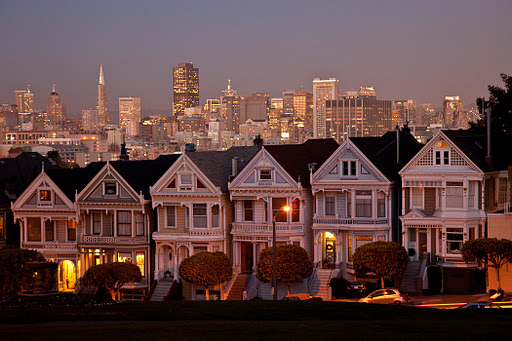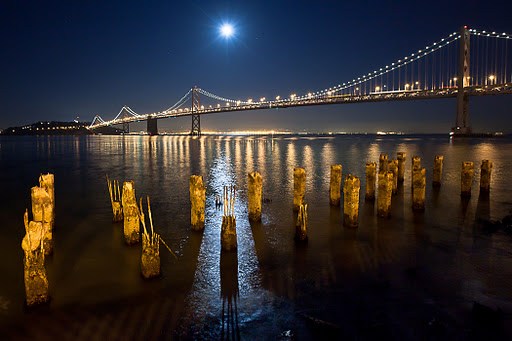Welcome to my photo travel blog. I am a landscape and night photographer who conducts photography workshops in some of America’s most exotic landscapes. I just completed a travel guide to the best landscape photography locations in Southern California, to be available in September 2015.
Tuesday, December 13, 2011
The Geminid Meteor Shower Peaks Tonight!
The good news is that the Geminid meteor shower peaks on the nights of December 13 and 14, so tonight one of the strongest meteor showers of the year. The bad news is that the moon rising around 8 pm tonight and 9 pm tomorrow night will interfere with the visibility of the meteors. How much will it interfere? Actually I have a video of Geminid meteor shower from past year with and without the moon in the sky which can show you the difference.
Make sure you're watching this in HD, and it's best watched full scree as well:
You'd definitely see more meteors without the moon, so try watching before the moon rises, but if you're up in the key viewing hours between 11am and dawn, look up in the eastward sky and you might get lucky and see a decent fireball!
Monday, December 12, 2011
Chasing The Moon: Lunar Eclipse December 10, 2011
Having shot lunar eclipses several times in the past, my objective this time was to see whether I could line up the Eclipsed moon with a major landmark. I selected San Francisco's most iconic building, the Transamerica Pyramid. The time I chose was 6:06am, right when the eclipsed moon should be coming out from total eclipse and brightening back up. I looked up the height of the building, the elevation angle of the moon at that time, and that enabled me to calculate the distance I would need to be from the building. I determined the compass direction the shadow would fall, and located point on Google earth with the right direction and distance.
I set my camera up in that spot 10 minutes early, and here's how the next 10 minutes turned out:
I pretty much nailed it... the center of the moon passes right past the tip of the building!
Here are some more of my images from that night:

I set my camera up in that spot 10 minutes early, and here's how the next 10 minutes turned out:
I pretty much nailed it... the center of the moon passes right past the tip of the building!
Here are some more of my images from that night:


Friday, December 09, 2011
Lunar Eclipse Photography, Dec 10, 2011
For tonight's moon rise and lunar eclipse events, there are a range of shots available:
Moon Rise: Friday evening before sunset (about 4:15, but time varies with location)
Sunset: Continued moonrise in best post-sunset color (about 5pm, but time varies with location).
Penumbral Eclipse Begins: 3:33am PST, moon at 41.4 degrees altitude
- Night landscapes or cityscapes with full moon in penumbral slightly dimmed state
Partial Eclipse Begins: 4:45am PST, moon at 27.0 degrees altitude (partial eclipse)
- Telephoto shots of moon in various eclipse phases
Total Eclipse Begins: 6:06am PST, moon at 12.3 degrees altitude (nice crescent moon w/red shots in the moments before this)
- Images of red moon and sky over landscapes/cityscapes
Total Eclipse Ends: 6:57am PST, moon at 2.9 degrees altitude
- Partially eclipsed crescent moon setting in best pre-sunrise light
Sunrise: 7:12am PST, moon at 0.4 degrees altitude (partial eclipse)
- Sunrise to moonset, "golden hour" daylight
Moonset: 7:17am PST, moon at -0.3 degrees altitude (partial eclipse)
- If you're in a very high place with very low horizons, for a few short minutes you may be able to capture a panorama, with the rare event of having both the sun and the moon in the sky at the same time!
The additional numbers are the degrees the moon will be above the horizon. Here's a chart enabling you to anticipate which of your lenses can cover something that high, for the shots where you'd like to include both the ground and the eclipsing moon:
Common lens angles of view
http://en.wikipedia.org/wiki/Angle_of_view#Common_lens_angles_of_view
If you shoot the entire eclipse in a sequence of still shots with your camera in one place, you can assemble them into a timelapse video like this one:
The other post-processing option for a sequence would be to create a composite photo of the phases, stacked into one image using software such as the free StarStaX:
Lunar Eclipse August 2007
Here are my planning notes from last year, when it took me 46 hours to reach Tucson and a clear patch of sky to shoot the eclipse under:
Phases of the December 2010 Total Lunar Eclipse
http://activesole.blogspot.com/2010/12/phases-of-tonight-lunar-eclipse.html
For most viewers the apparent moon set time will tend to be a few minutes earlier due to terrain (or fog/smog).
Hopefully I'll find it a little easier this time around. The next total lunar eclipse isn't until 2014, so make the most of this one!
Subscribe to:
Comments (Atom)